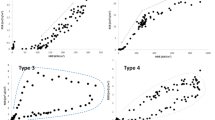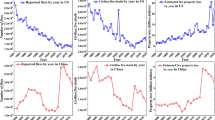Abstract
An experimental and numerical investigation was conducted to characterize the influence of the cellulosic substrate used to assess the ignition propensity (IP) of cigarettes. Such an IP test is currently prescribed by the ISO 12863 standard and its results typically show poor repeatability. It is believed that such a low reproducibility is mainly due to the variability of the cigarette itself but it is unclear as to what extent the substrate also influences the variability of the test results. Therefore, the objective of this investigation was to analyze the potential influence of the substrate by first characterizing the thermodynamic behavior experimentally and then constructing a numerical model that can quantify the relative influence of the distinct parameters. A suite of experimental methods that included TGA, DSC, infrared measurements and laser triangulation among others was used to measure the thermophysical properties of the substrate. These properties were then used to build a CFD model that simulated the smoldering combustion experienced by the substrate during the IP test. After validating the model against contactless temperature measurements, a parametric study consisting of 363 IP simulations was performed, which served to quantify the relative importance of 13 thermophysical parameters when varying in ranges of about 5%–50%. The results indicated that the heat capacity, pyrolysis activation energy, and air gap thickness are the most influencing aspects of the substrate because they influence the heat absorbed by the substrate about 7%, 26% and 33%, respectively. The latter parameter was found to significantly vary with each test and its influence was comparable to that of some major properties of the cigarette such as the cigarette’s temperature and burning rate. It is therefore postulated that the variability of the substrate itself plays an important role on the poor repeatability of the test and it may comprise its reliability.





Similar content being viewed by others
Abbreviations
- A :
-
Pre-exponential factor (1/s)
- c :
-
Specific heat capacity (J/kgK)
- D :
-
Diffusion coefficient (\(\mathrm{m}^2/\mathrm{s}\))
- E :
-
Activation energy (J/mol)
- g :
-
Gravitational acceleration (\(\mathrm{m}/\mathrm{s}^2\))
- h :
-
Enthalpy (J/kg) or convective heat transfer coefficient (\(\mathrm{W}/\mathrm{m}^2\mathrm{K}\))
- \(\varDelta H\) :
-
Heat of the reaction (J/kg)
- \(\dot{j}^{\prime \prime }\) :
-
Diffusive mass flux (kg\(/\mathrm{m}^2\mathrm{s}\))
- K :
-
Permeability (\(\mathrm{m}^2\))
- k :
-
Thermal conductivity (W/mK)
- M :
-
Molecular mass (kg/mol)
- \(\dot{m}^{\prime \prime }\) :
-
Mass flux (kg\(/\mathrm{m}^2\mathrm{s}\))
- \(n_{c_{p}}\) :
-
Exponential factor of the specific heat equation (1)
- P :
-
Pressure (Pa)
- \(\dot{Q} ^{\prime \prime \prime }\) :
-
Volumetric rate of heat source (\(\mathrm{W}/\mathrm{m}^3\))
- \(\dot{q}^{\prime \prime }\) :
-
Heat flux (\(\mathrm{W}/\mathrm{m}^2\))
- R :
-
Universal gas constant (J/molK)
- t :
-
Time (s)
- T :
-
Temperature (K)
- X :
-
Volume fraction (1)
- Y :
-
Mass fraction (1)
- z :
-
Depth coordinate (m)
- \(\gamma _T\) :
-
Cigarette’s temperature reduction factor (1)
- \(\delta \) :
-
Thickness (m)
- \(\varepsilon \) :
-
Emissivity (1)
- \(\kappa \) :
-
Permeance (m/Pa s)
- \(\mu \) :
-
Dynamic viscosity (Pa s)
- \(\nu \) :
-
Kinematic viscosity (\(\mathrm{m}^2/\mathrm{s}\))
- \(\sigma \) :
-
Steffan–Boltzmann constant (\(\mathrm{W}/\mathrm{m}^2\mathrm{K}^4\))
- \(\varPsi \) :
-
Porosity (1)
- \(\dot{\omega } ^{\prime \prime \prime }\) :
-
Volumetric reaction rate (kg\(/\mathrm{m}^3\mathrm{s}\))
- a :
-
Ash
- air :
-
Air
- amb :
-
Ambient
- c :
-
Cellulose
- ch :
-
Char
- cig :
-
Cigarette
- cs :
-
From the cigarette to the substrate
- chox :
-
Char oxidation reaction
- d :
-
Destruction or datum
- ev :
-
Evaporation reaction
- f :
-
Formation
- g :
-
Total gas
- i :
-
Condensed species index: c, m, ch, a
- in :
-
Flux inwards the substrate
- j :
-
Gas species index: \(\mathrm{N}_2\), \(\mathrm{O}_2\), vap, pg, pr
- k :
-
Reaction index: ev, pyr, chox
- l :
-
Lower side of the substrate
- m :
-
Moisture
- \(\mathrm{N}_2\) :
-
Nitrogen
- \(\mathrm{O}_2\) :
-
Oxygen
- p :
-
At constant pressure
- pg :
-
Pyrolysis gases (pyrolysates)
- pr :
-
Gas products resulting from char oxidation
- pyr :
-
Pyrolysis reaction
- r :
-
Reference
- s :
-
Solid non-porous density
- sa :
-
From the substrate to the ambient
- sb :
-
Substrate
- u :
-
Upper side of the substrate
- v :
-
Burning rate of the cigarette
- vap :
-
Water vapor
References
Barillo DJ, Brigham PA, Debra AK, Heck RT, McManus AT (2000) The fire-safe cigarette: a burn prevention tool. J Burn Care Res 21(2):164–170.
Standard, International Organization (2010) Standard test method for assessing the ignition propensity of cigarettes. Standard, International Organization for Standardization, Geneva
Ohlemiller TJ, Kashiwagi T, Werner K (1987) Wood gasification at fire level heat fluxes. Combust Flame 69(2):155–170.
Kashiwagi T, Ohlemiller TJ, Werner K (1987) Effects of external radiant flux and ambient oxygen concentration on nonflaming gasification rates and evolved products of white pine. Combust Flame 69(3):331–345.
Ohlemiller TJ (1991) Smoldering combustion propagation on solid wood. Fire Saf Sci 3:565–574.
Moallemi KM, Zhang H, Kumar S (1993) Numerical modeling of two-dimensional smoldering processes. Combust Flame 95(1):170–182.
Das O (1999) Modelltheoretische Untersuchungen von Schwel- und Glimmbränden in Dämmschichten: Simulation von Schwel- und Glimmbränden in Cellulose. Fortschritt-Berichte VDI: Reihe 4, Bauingenieurwesen. VDI-Verlag
de Souza Costa F, Sandberg D (2004) Mathematical model of a smoldering log. Combust Flame 139(3):227–238
DiNenno PJ (2008) SFPE handbook of fire protection engineering. SFPE, Gaithersburg
Li KY, Huang X, Fleischmann C, Rein G, Ji J (2014) Pyrolysis of medium-density fiberboard: optimized search for kinetics scheme and parameters via a genetic algorithm driven by kissingers method. Energy Fuels 28(9):6130–6139.
Huang X, Rein G (2014) Smouldering combustion of peat in wildfires: inverse modelling of the drying and the thermal and oxidative decomposition kinetics. Combust Flame 161(6):1633–1644.
Huang X, Rein G, Chen H (2015) Computational smoldering combustion: predicting the roles of moisture and inert contents in peat wildfires. Proc Combust Inst 35(3):2673–2681.
Huang X, Rein G (2016) Thermochemical conversion of biomass in smouldering combustion across scales: the roles of heterogeneous kinetics, oxygen and transport phenomena. Bioresour Technol 207:409–421.
Huang Xi, Li K, Zhang H (2017) Modelling bench-scale fire on engineered wood: Effects of transient flame and physicochemical properties. Proc Combust Inst 36(2):3167–3175.
Rostami A, Murthy J, Hajaligol M (2003) Modeling of a smoldering cigarette. J Anal Appl Pyrol 66(1):281–301.
Saidi MS, Mhaisekar A, Hajaligol MR, Subbiah M (2008) Mathematical modeling of a lit-end cigarette: Puffing cycle and effects of puff counts. Beiträge zur Tabakforschung/Contrib Tob Res 23(1):46–62.
Leach SV, Rein G, Ellzey JL, Ezekoye OA, Torero JL (2000) Kinetic and fuel property effects on forward smoldering combustion. Combust Flame 120(3):346–358.
Bar-Ilan A, Rein G, Fernandez-Pello CA, Torero JL, Urban DL (2004) Forced forward smoldering experiments in microgravity. Exp Thermal Fluid Sci 28(7):743–751.
Rein G, Bar-Ilan A, Fernandez-Pello AC, Ellzey JL, Torero JL, Urban DL (2005) Modeling of one-dimensional smoldering of polyurethane in microgravity conditions. Proc Combust Inst 30(2):2327–2334.
Rein G, Lautenberger C, Fernandez-Pello AC, Torero JL, Urban DL (2006) Application of genetic algorithms and thermogravimetry to determine the kinetics of polyurethane foam in smoldering combustion. Combust Flame 146(1):95–108.
Mitler HE, Walton GN (1993) Modeling the ignition of soft furnishings by a cigarette. US Department of Commerce, National Institute of Standards and Technology
Rogers FE, Ohlemiller TJ (1980) Cellulosic insulation material i. overall degradation kinetics and reaction heats. Combust Sci Technol 24(3–4):129–137.
Kashiwagi T, Nambu H (1992) Global kinetic constants for thermal oxidative degradation of a cellulosic paper. Combust Flame 88(3–4):345–368.
Paper and board—determination of moisture content of a lot—oven-drying method. Standard, International Organization for Standardization, Geneva, CH, June 2009
Paper and board—determination of thickness, density and specific volume. Standard, International Organization for Standardization, Geneva, CH, November 2011
Paper and board—determination of grammage. Standard, International Organization for Standardization, Geneva, CH, July 2012
Reaction to fire tests for products—determination of the gross heat of combustion (calorific value). Standard, International Organization for Standardization, Geneva, CH, June 2010
Paper and board—determination of air permeance (medium range)—part 3: Bendtsen method. Standard, International Organization for Standardization, Geneva, CH, November 2013
Paper and board—determination of roughness/smoothness (air leak methods) – part 2: Bendtsen method. Standard, International Organization for Standardization, Geneva, CH, September 2013
Lautenberger C, Fernandez-Pello C (2009) Generalized pyrolysis model for combustible solids. Fire Saf J 44(6):819–839.
Lautenberger C (2014) Gpyro3d: A three dimensional generalized pyrolysis model. Fire Saf Sci 11:193–207
Baker RR (1974) Temperature distribution inside a burning cigarette. Nature 247:405–406.
Liu C (2005) A smouldering cigarette on 10-layer whatmanfilter paper substrate: temperature distribution. CORESTA, Stratford-upon-Avon.
Acknowledgements
This investigation was sponsored by the Deutscher Zigarettenverband e.V., an association representing most of the German tobacco industiry, and the authors greatly acknowledge its support.
Author information
Authors and Affiliations
Corresponding author
Rights and permissions
About this article
Cite this article
Guindos, P., Patel, A., Kolb, T. et al. Experimental and Numerical Characterization of the Influence of a Smoldering Cellulosic Substrate on a Cigarette’s Ignition Propensity Test. Fire Technol 54, 669–688 (2018). https://doi.org/10.1007/s10694-017-0699-2
Received:
Accepted:
Published:
Issue Date:
DOI: https://doi.org/10.1007/s10694-017-0699-2




